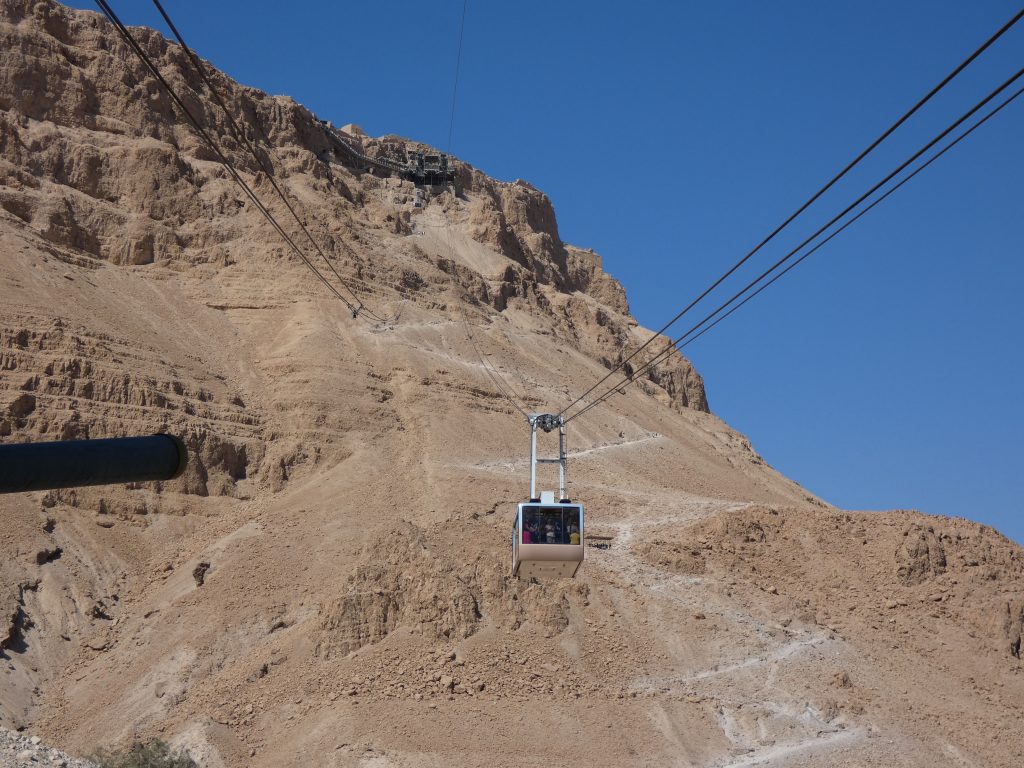
As I looked up towards Masada, I was fascinated by the towering Hasmonean fortress built into the Judean cliffs. Dating back to the 1st and 2nd Century BC, historian Josephus Flavius recorded that the original structure was built by “Jonathan the High Priest” to help protect the southern border. Located between the ancient cities of Sodom and Ein Gedi, Herod the Great later established this 18-acre stone stronghold as a summer palace for himself.
I had two options to reach this elaborate three-story complex resting 1300 feet above the Dead Sea. I chose to ride the aerial ropeway to the top rather than take the Snake Path on the east end. This alternative winds just over a mile to the top (about an hour hike up) and is considered moderately strenuous.
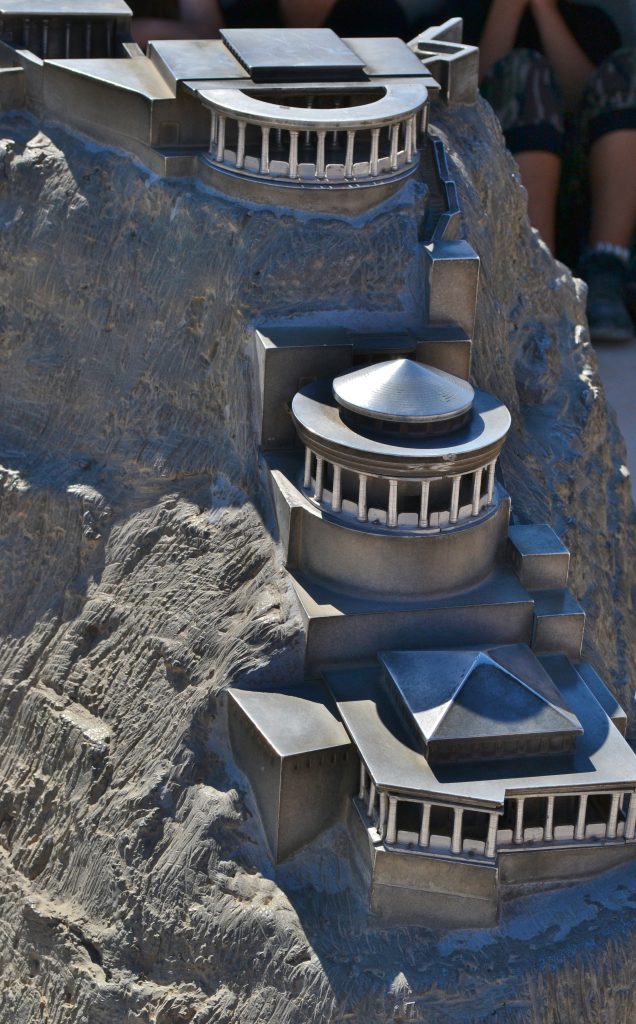
The floor plan of Herod’s complex was complete with storehouses, barracks, an armory, reception room, gates and towers, baths, large cisterns and a casemate wall surrounding the tall rocky mesa. On the northern side of the palace were three Roman-style terraces with bedrooms at the top, a patio in the center and reception hall and dining room at the lower level.
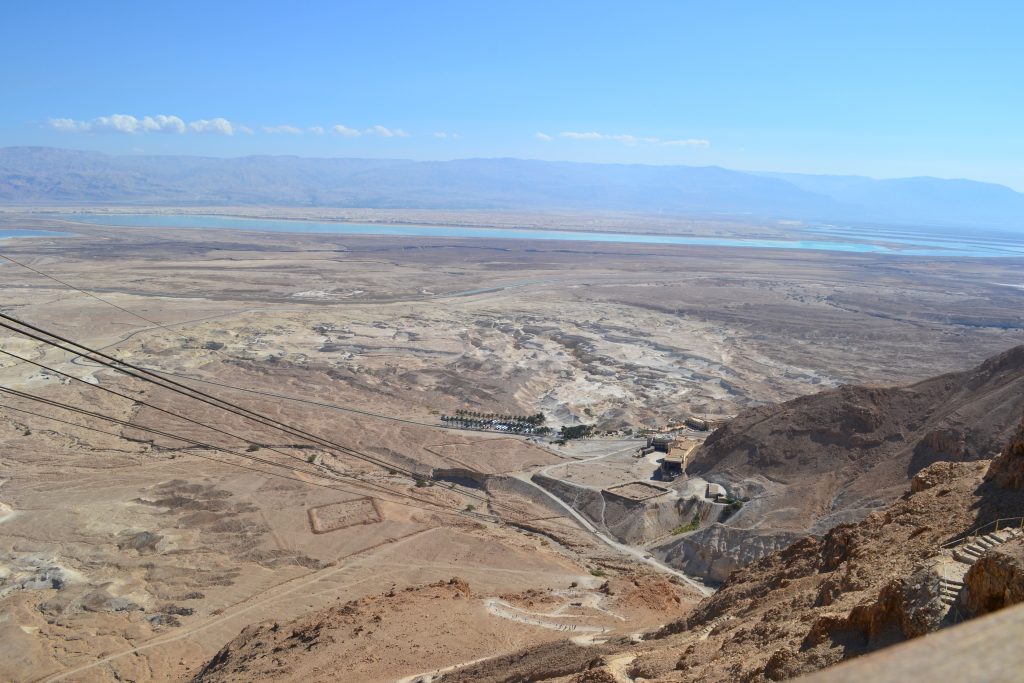
Much of what is known about Masada has been written by historian Josephus Flavius and a large part of his writings are based on the Jewish revolts in the first century AD.
The Great Revolt of the Jews broke out in 66AD led by Eleazaer ben Ja’ir. Fleeing the city of Jerusalem, the rebels secured three Herodian fortresses on the outskirts of town. By 70AD, Roman soldiers had established control over the palaces of Herodium and Machaerus, yet Masada remained under siege with 960 rebels living among its premises. By 72AD, the Romans made arrangements to regain the complex.
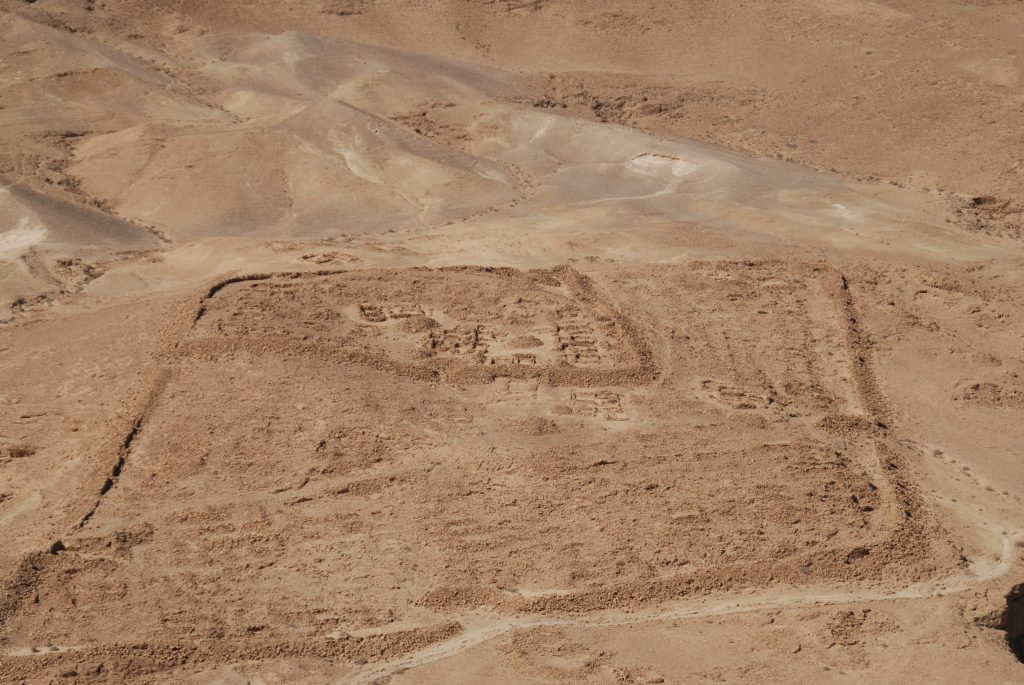
Large storerooms and cisterns were filled with supplies, so the soldiers determined that they would need to be proactive in forcing the Zealots out of the stronghold. Led by Commander Flavius Silva, over 8,000 Roman soldiers began their invasion by creating a path leading up to Masada on the east end and building a ramp on the west to act as a stone base for the battering ram. At the base of the mountain they built military camps for the legionnaires and auxiliaries as well as a circumvallation wall. When the tower was built on the ramp, the Jews realized that the Romans would soon take over Masada.
On April 15, 73AD, Ben Ya’ir stood before the rebels and declared his instructions to end their lives rather than hand themselves over to the Romans.
“We long ago my generous friends resolved never to be servants to the Romans nor to any other than God Himself. We were the first that revolted against them and I cannot but esteem it as a favor that God has granted us that it is still in our power to die bravely and in a state of freedom in a glorious manner together with our dearest friends. Let our wives die before they are abused and our children before they have tasted slavery.” –Josephus Flavius
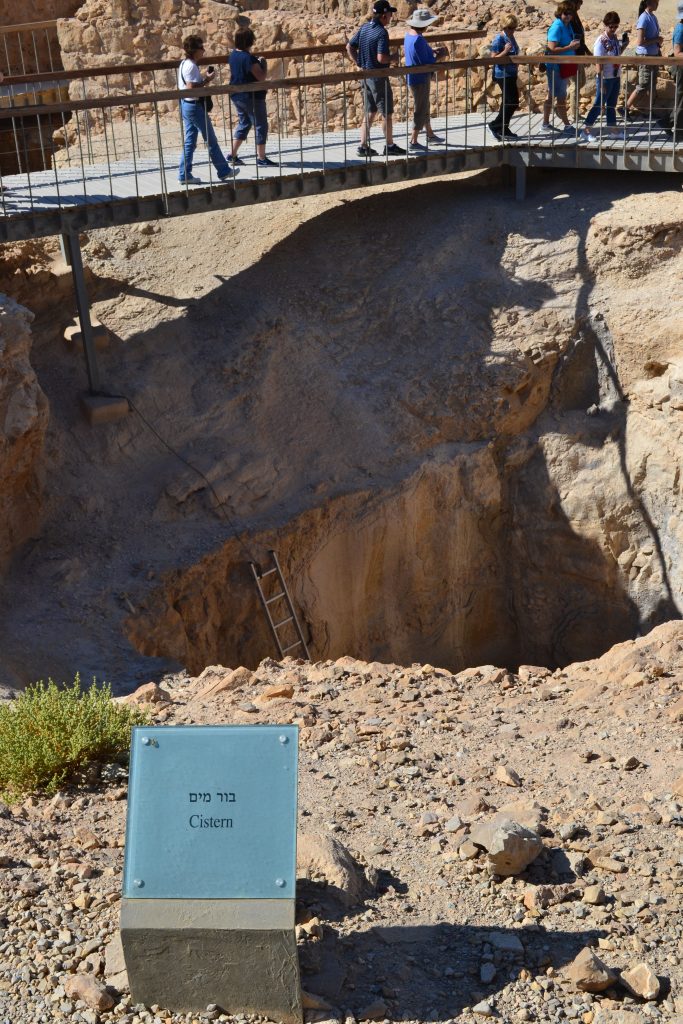
Josephus documented that “the Romans breached the wall on the eve of Passover (fifteenth of Nissan) when there was a full moon and then retired to wait until morning.” He further describes that when the Roman soldiers arrived, they were met with the death of the Zealots, taking their fate into their own hands. According to Josephus, only two women and five children survived the event by hiding in a cistern. They later gave an account of the rebels’ demise.
“So the husband tenderly embraced their wives and took their children into their arms, giving the longest parting kisses to them with tears in their eyes. Each man killed his wife and children; ten men were chosen by lot to slay the rest until all 960 were dead.” –Josephus Flavius
By the 5th century AD, a group of monks would transform Masada into a Byzantine monastery with a chapel built by Euthymius. However, the fortress would become abandoned once again as Islam moved into the region. Discovered once again in 1828, it wasn’t until 1953 when excavations would begin under the direction of Shmariya Gutman. In 1966, the property was opened for tourists as a national park.
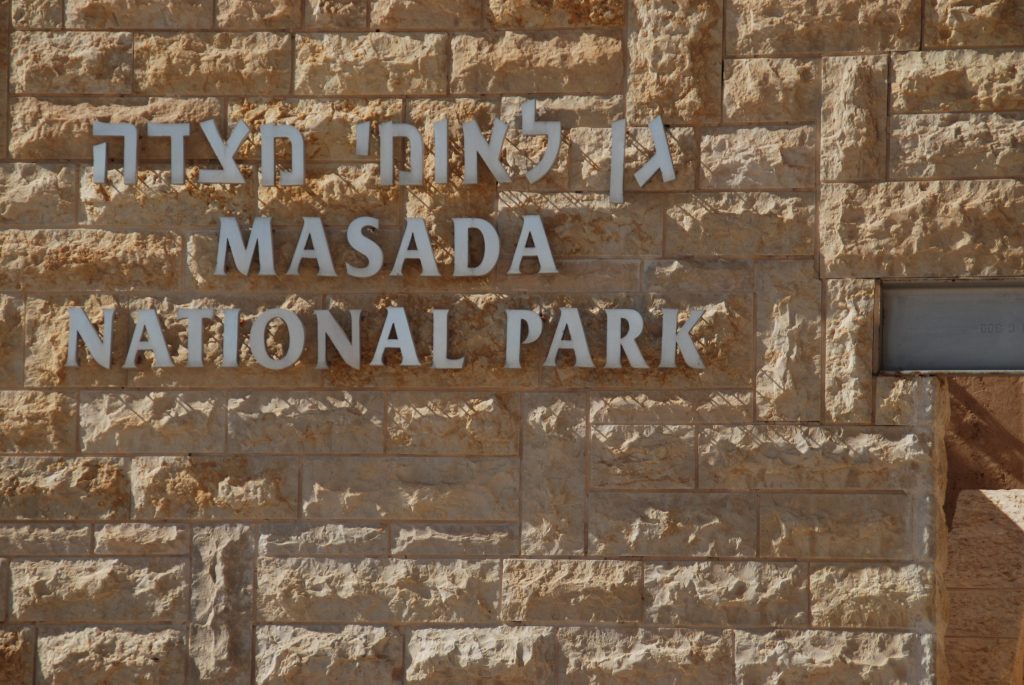
I arrived at the beautiful stone museum at the foot of the mountain which was opened in 2007. Entering the large circular foyer, I picked up my ticket from tour guide and archaeologist, Mark Ziese, and took my place around the bronze replica of Masada for a short introduction to the site. My visit included a ride up to the top by cable car and I entered through the Snake Path Gate.
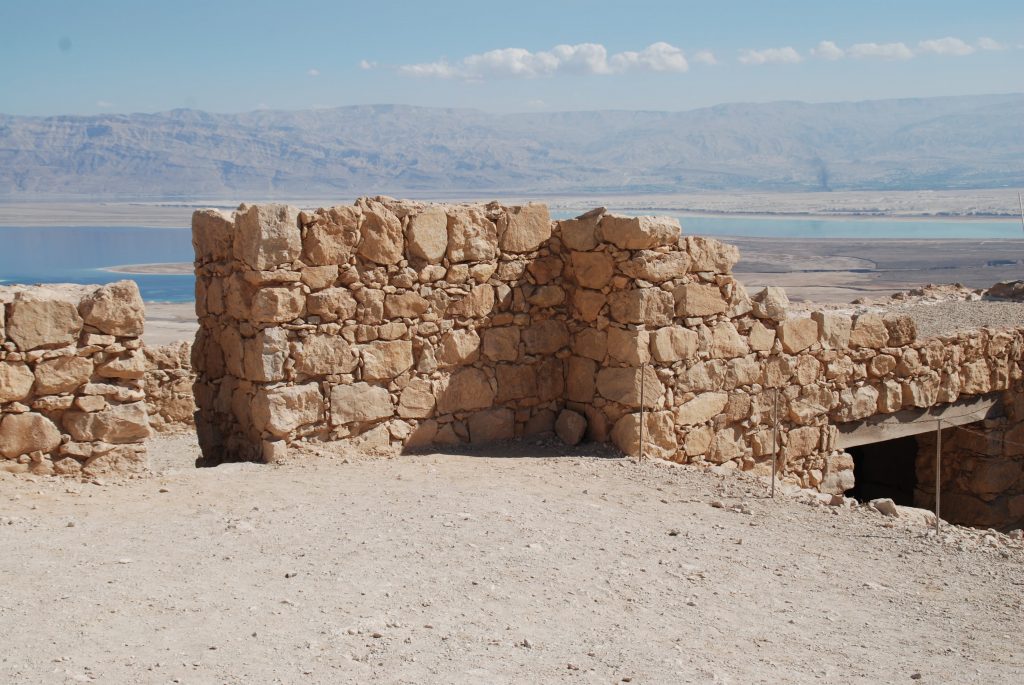
There were a total of seven gates that entered Masada. Through the Snake Path Gate, we were welcomed by a large open courtyard with directional signs pointing towards the Western Palace or Northern Palace. Storerooms lined the walls and towers emerged in the distance as I followed Mark towards Herod’s elaborate palace heading north. We strolled through large storage areas and arrived at the Commandant’s Residence.
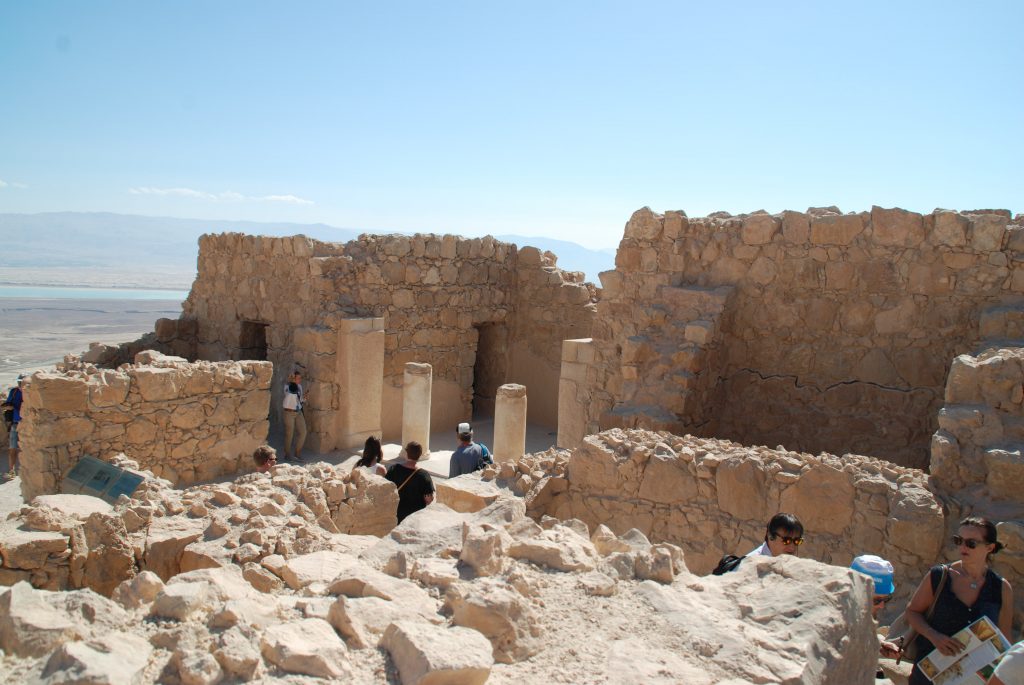
The large Residence of the Commandant housed a high ranking official within Herod’s Palace. With a small courtyard built alongside the warehouse complex on the south end of the fortress, there were also remains of a hearth and oven dating back to the time of the Jewish revolt.
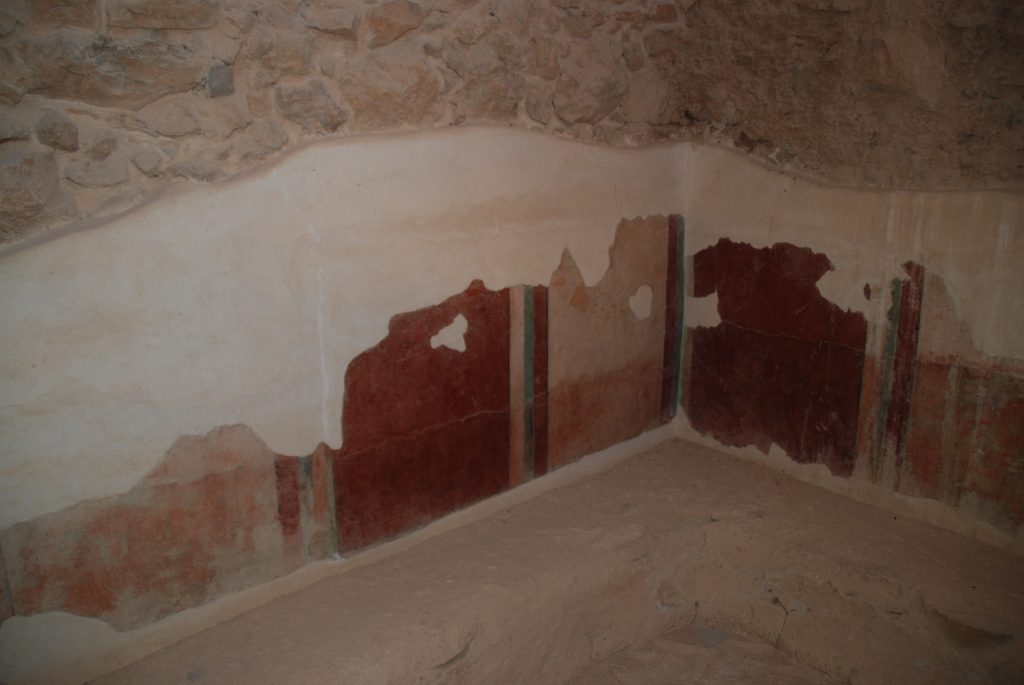
Although King Herod was neither Roman nor Jew, the Roman bath was an important part of society during his rule. Elaborate baths would include a wide variety of rooms to include a dressing room, a tepidarium for warm baths, a frigidarium for cold baths and the caldarium to enjoy the therapeutic effects of steam bathing. Sections of the tiled floor, frescoed walls and benches are what remain of Herod’s dressing room, while a mikvah (ritual bath) in the corner was built by the Zealots of the Jewish War.
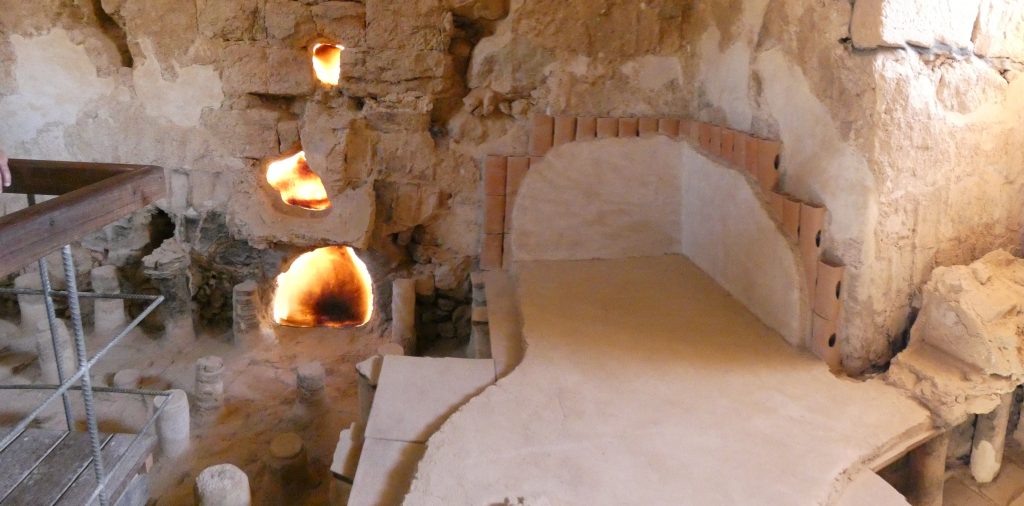
The caldarium was such an interesting invention. With the help of a kiln, a double floor was heated by a hypocaust which consisted of an underfloor heating system. While slaves would stoke the fire of the furnace, the hot air would be captured by ceramic columns set beneath the quartz floor and exited through terracotta pipes along the walls where the steam would escape.
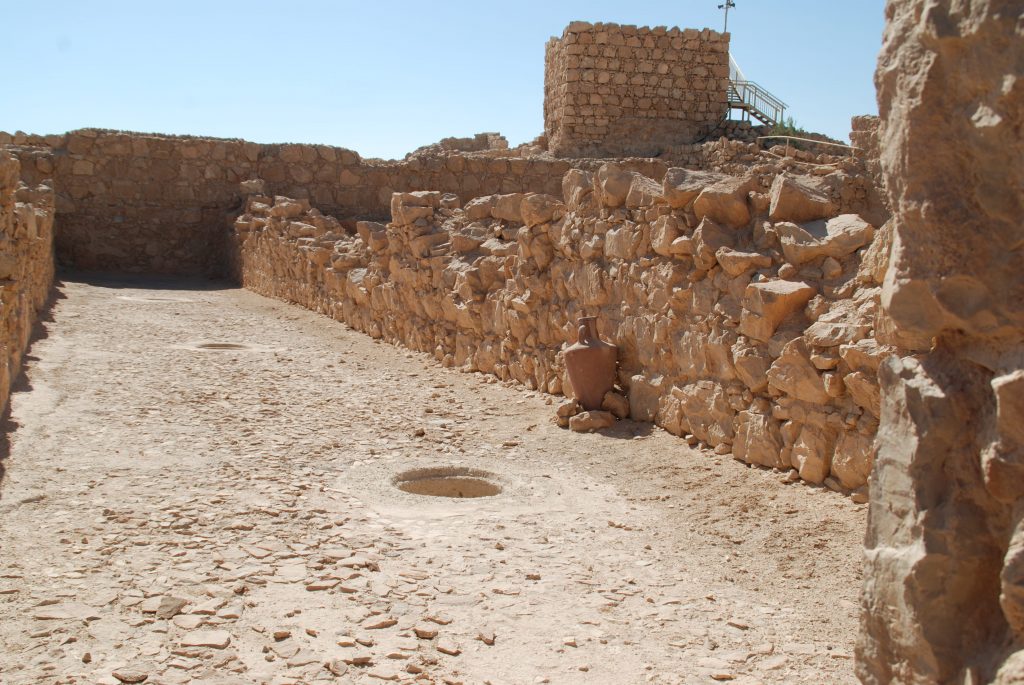
I enjoyed imagining how the palace would have appeared 2000 years ago with gorgeous frescoes, tiled floors, stately columns and marbled structures. We strolled through the maze of living quarters and as we approached the complex of store rooms with, I pictured the massive quantities of food that was kept on the premises and the wine and oil contained in large porcelain vessels, imported from Greece and Rome. Josephus stated, “…and there was wine and oil in abundance, and they have heaps of beans and figs. And the fruit was fresh and perfectly ripe.”
When archaeologist Yigael Yadin excavated the storerooms in the mid-1960s, he found preserved food that had been sitting there for over 2000 years and large cisterns that could have stored enough water for 1000 people over a period of a year.
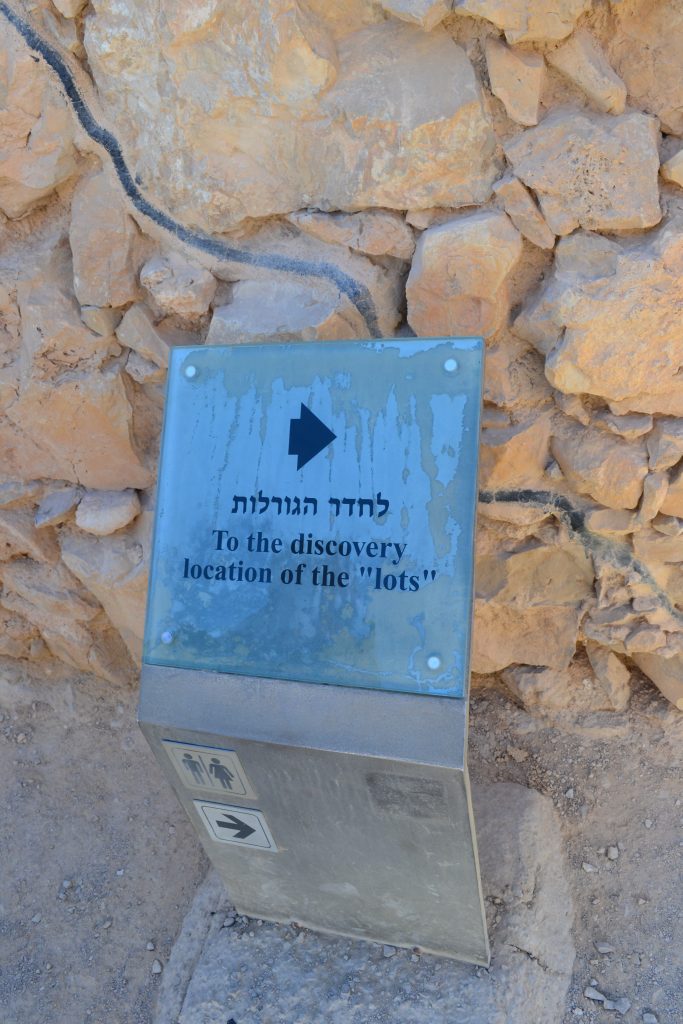
Soon, I noticed a directional sign that pointed towards the “discovery location of the lots.” I had learned that it was in this room archaeologist Yagael Yadin had found ostrica, or lots made from potshards. Names of the Sacarii Zealots had been written on these pieces of pottery including Ben Ja’ir, the leader of the rebels. Some believed these shards were used in the distribution of daily food rations. Others are certain that these potshards represented who would kill the last of the Jewish rebels before committing suicide themselves. Because the Jewish law forbade the Jews to kill themselves, the Zealots believed that this was the best way to ensure that none of them would be captured, tortured and killed while gaining entrance into heaven.
Controversies surround the Mass Suicide story for several reasons. One, Josephus was the only documentation of the suicide; two, there were too many ostrica as documented by Josephus and, three, Yadin did not find evidence of skeletal remains from a mass suicide at Masada.
Notice the black “in situ line” which shows the original structure below and the reconstructed structure above.
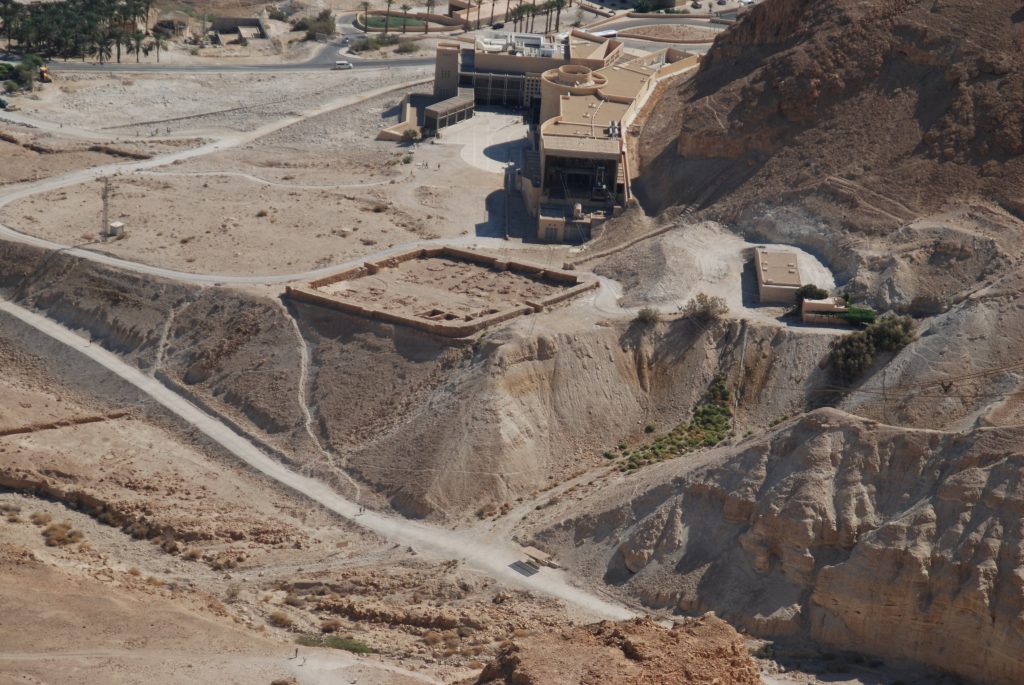
Looking down from Masada towards the museum and parking area is a large reinforced square, referred to as Roman encampment, Camp A.
The Roman siege works at Masada were in excellent condition which encircled the base of the mountain. Eight in total, they were built by the Romans during the Jewish Revolt to house the legionnaires (professional soldiers of the Tenth Legion) and the auxiliaries (drafted soldiers). The size of each camp determined which type of soldiers was housed at each location.
During the 1995 excavation of these encampments, archaeologists spent six long weeks at Camp F, one of the legionnaire camps which was best preserved and largest of the other siege camps. Also referred to as “Silva” named after the Roman Commander, it was built as temporary housing units with stone walls 10 – 12 feet tall with lower inside walls to house the tents. A praetorium (tent unit) was discovered for commander Flavius where they discovered a beautifully painted Nabatean bowl, glass from Italy and a wine jar with ivy leaf painting. Within the structure was the tribunal (podium) where Flavius would have addressed his troops and a triclinium (officer’s mess) with dining couches. The principia (headquarters) was the only structure with plastered walls and floors.
Later excavations uncovered contubernium which would have housed the Roman auxiliaries. There were eight soldiers per contubernium where four would stand watch while the remaining would sleep. Evidence of an open courtyard, a hearth for cooking food, piles of pebbles used as slingshot stones, arrowheads, and scales of armor and pieces of leather from their uniforms were found on site.
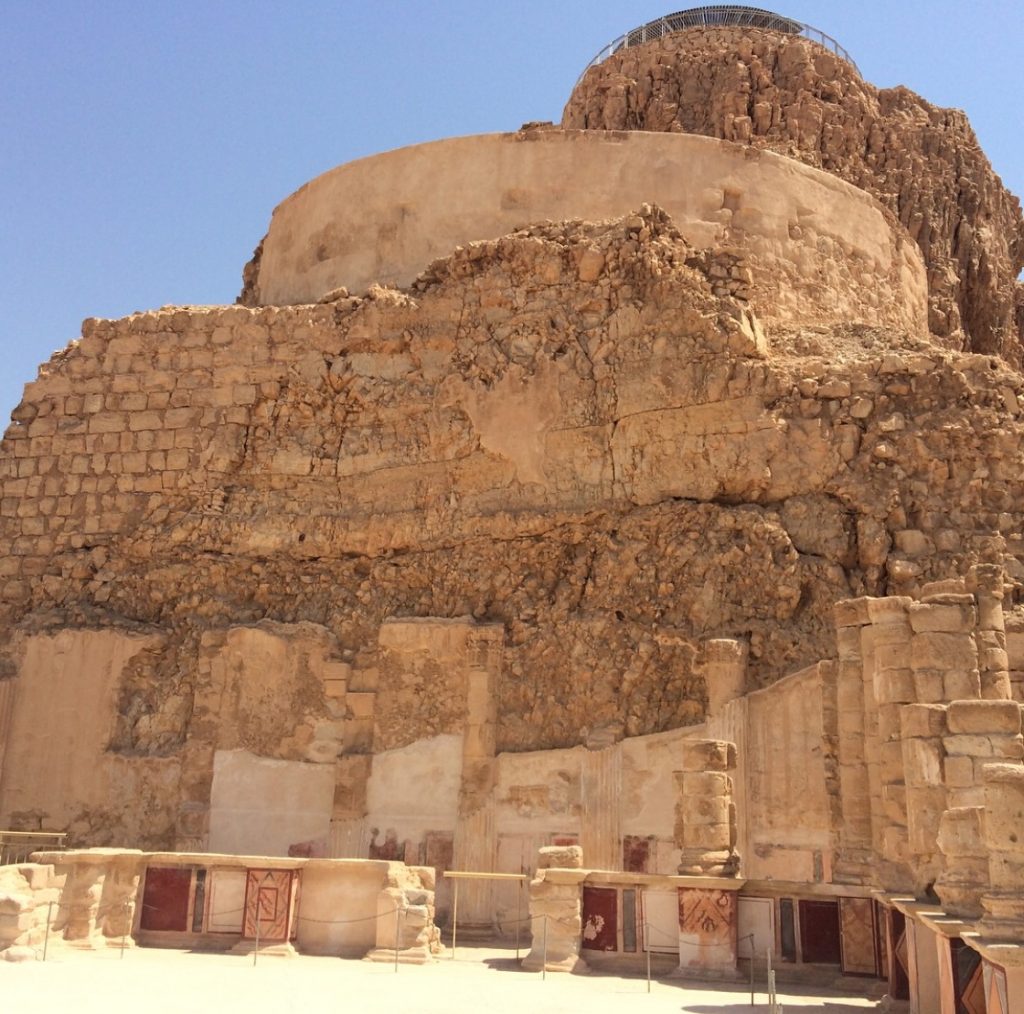
What remains of Masada’s tri-level Northern Palace is more than spectacular with its semicircular terrace offering magnificent views of the Dead Sea and Judean wilderness. This three story summer home of King Herod, carved from the rock terraces consisted of the family living area at the top, the terrace in the middle for entertaining and bathing facilities on the bottom level.
The palace was constructed in three stages between 35 to 15 BC. Beginning with the royal chambers, the palace stores and administrative offices (and presumably a torture dungeon) were added at a later date. The service area was outfitted with kitchens, pantries and smaller storage units. The Greek black and white columns matched the mosaic floors of onyx and pearl while dazzling mosaics adorned the floors with the finest frescoes painted in shades of brilliant jewels. Painted on plaster, the masterworks included “The Seven Sisters” a popular scene which depicted seven sisters as stars moving about the sky dressed in silver and gold.
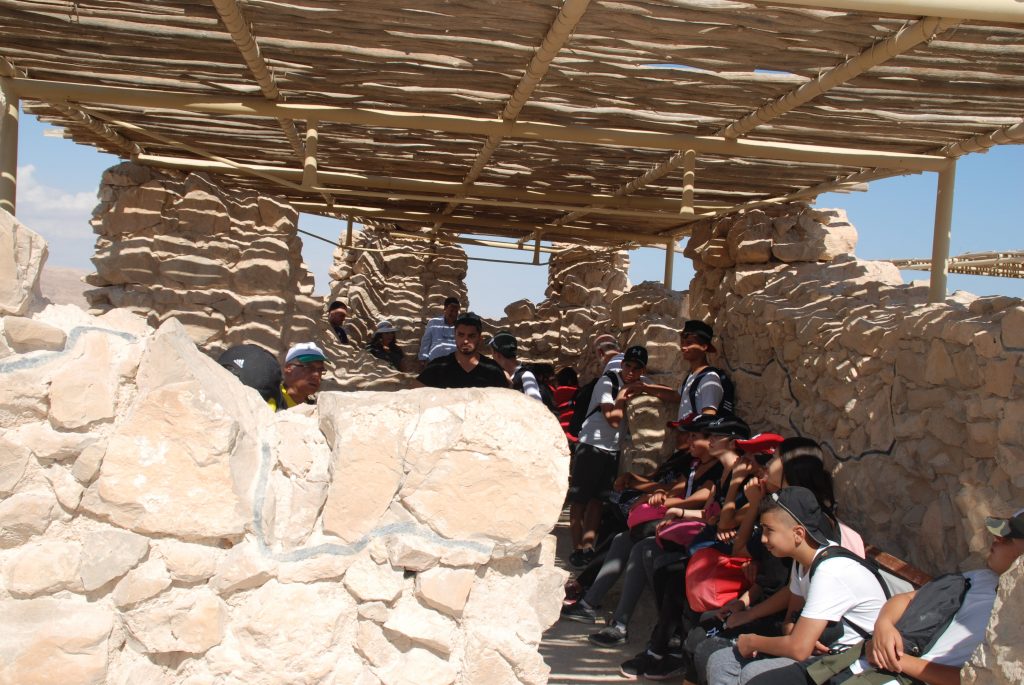
Outside of the northern complex were guard rooms positioned near the palace for security. Josephus writes “There was also found a mass of arms of every description; hoarded up by the king and sufficient for then thousand men.” This would suggest that the storerooms may have contained weapons or other valuable items.
During excavations of the Northern Palace, archaeologists found the skeletons of a man, woman and child. Because the man was dressed in royal armor, it was supposed that he was one of the rebel chiefs with his family.
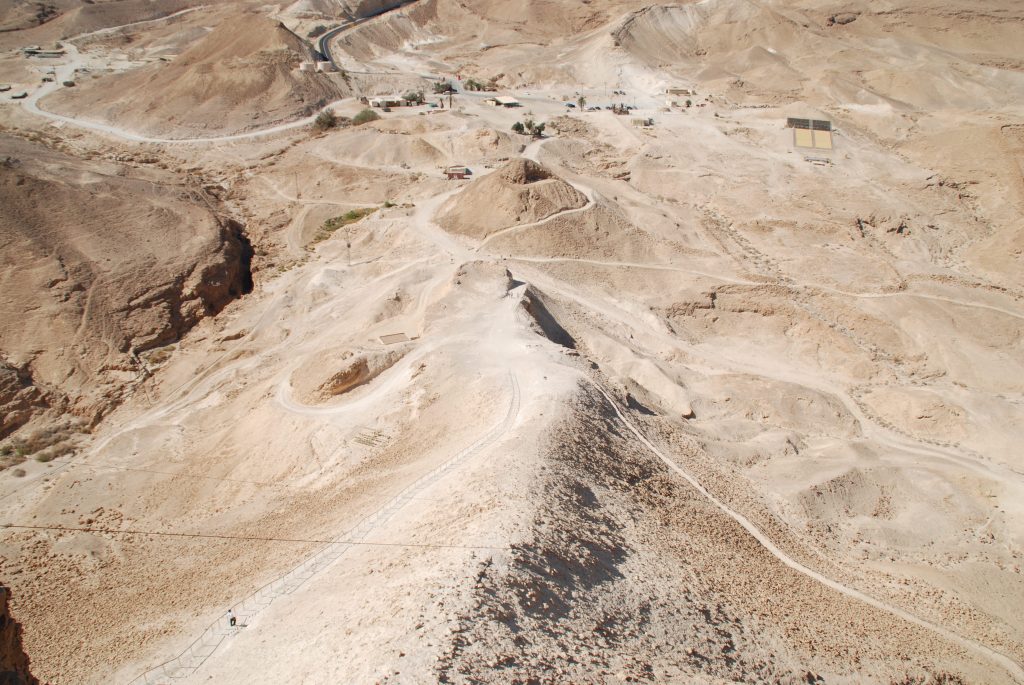
The breaching point is where the siege of Masada ended. The Romans had devised a ramp that would reach the summit of the mountain. Their intention was to use a battering ram to attack the casemate wall to cause damage to the fortress.
“When night fell and it was clear that the situation was hopeless and that the Romans would break in at dawn, Eleazar Ben Ya’ir assembled his followers and called for mass suicide. The Romans, expecting further opposition…were at a loss to conjecture what had happened…Here encountering the mass of the slain, instead of exulting as over enemies, they admired the nobility of their resolve and the contempt of death displayed by so many in carrying it, unwavering, into execution.” –Josephus Flavius
Excavations uncovered ballista balls, arrowheads and several slingshots. Evidence of burning was also found at this location, which corresponds with Josephus’ account.

Several cisterns exist on and around Masada. Designed as part of a sophisticated water system, these large receptacles of water could contain more than 40,000 cubic meters from rain and winter floodwaters. On the premises is an interactive demonstration of this marvel of Roman engineering.
Walking along the casemate wall, we discovered the Synagogue built during the time of Herod. Researchers have not been able to agree whether this structure was intended as a place of worship for Herod’s staff, a general meeting place or possibly used as a stable.
Archaeologists have determined that this space was converted into a dining room during the time of the revolts. A small room was closed off in the corner to serve as a genizah or a storage for damaged scrolls confirmed by the finding of papyrus and sections of scrolls, including the “Vision of Dry Bones” of Ezekiel 37.
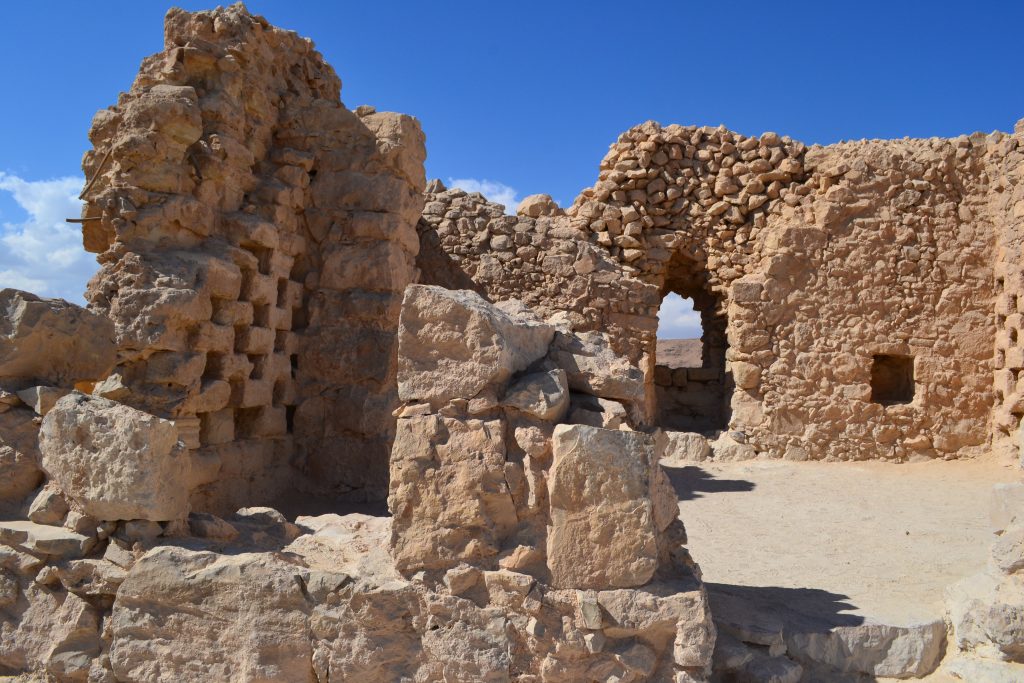
I found myself more fascinated with the three columbaria (dovecot) where doves were raised primarily for food. Designed with stone and plaster, the lower level was created to house the birds while the upper tower may have been used to release the doves as a method of communication or to observe the movement of flocks to predict the future. In each of the several hundred raised niches, a pair of doves would nest together. The shelves were elevated to ensure that snakes could not easily steal the eggs and screened to protect the doves from local hawks and falcons. During Roman occupation, these alcoves acted as funerary chambers, storing the ashes of the dead.

The Western Palace was half the size of the Northern Palace with a courtyard surrounded by several rooms and a water cistern. Herod governed here and built an Olympic size swimming pool on the west. Visitors can reach his throne room by passing through two guard rooms and a formal hall. Four indentations mark the location of his throne. Additional sites of note include bathtubs, a latrine, the House of Torah, a second swimming pool and the largest cistern on the premises. Elegant chambers stored additional food and wine while workshops were established for the metal workers, tanners, bakers and such.
Within the Casemate of the Scrolls was one of the largest archaeological finds to include artifacts from the time of the revolt. “…inscribed sheets of papyrus, fragments of scrolls, silver shekel coins, textiles, sandals and glass vessels and bone implements. Among the finds was the pay record of a Roman cavalryman in the Tenth Legion. The most interesting finds were the scroll fragments some of which show that during the siege there were members of different sets on the mountain….On the floor of the room were found ballista balls and rolling stones, which came from the roof of the casement and nearby tower.” –Masada National Park
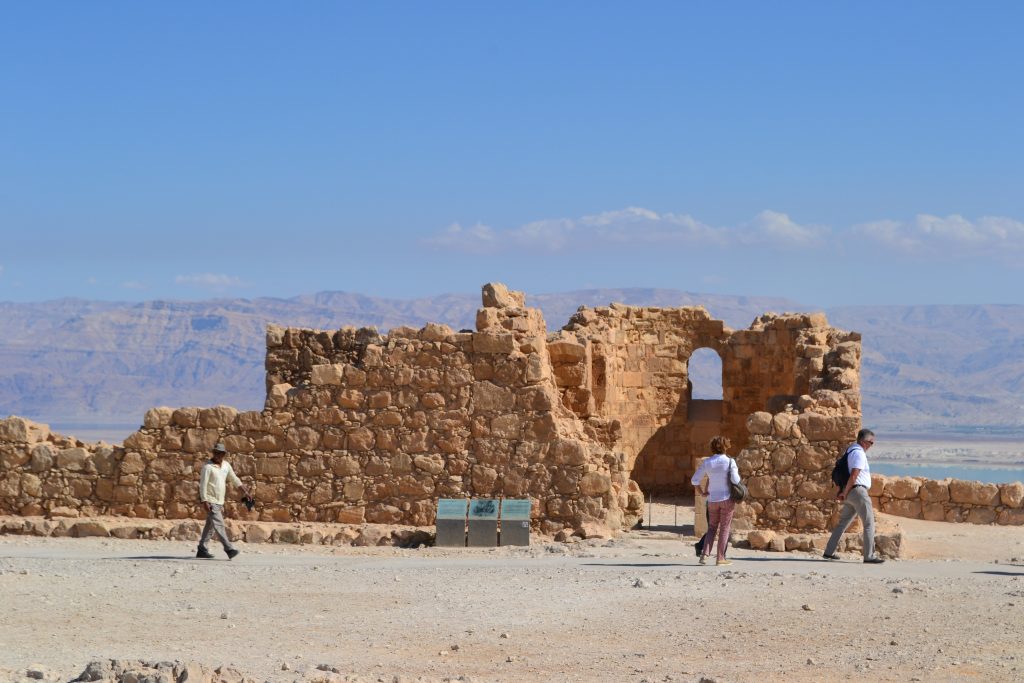
Our time was coming to a close and the last site to explore was the Byzantine Church before riding the aerial tram back down the mountain. Built in the fifth century using stones from some of Herod’s structures on the property, the chapel was erected by monks who transformed Masada into a monastery. The walls, beautifully decorated with stone mosaics, was a place of worship for the religious clerics. A crypt, found beneath the altar, a baptistry and the motif of grapes and bread that adorned the floor were interesting archaeological finds. Only a part of the mosaic floor survives as local Bedouins dug it up in search of monk’s gold. The ruins are said to be related to the Lavra Marda in the 6th century AD as mentioned in the documents of John Moschus.
While touring the stunning fortress, there is no doubt of Herod’s riches and opulence. It was said that his gardens were much to envy as well. The flourishing myrtles, grapevines and fruit trees were known throughout the land, but it was his fig trees that made him famous. Much so, that Cleopatra wanted them for herself and the treasures that Judah possessed. While King Herod will forever be known as the king who tried to have Jesus killed as a baby, it is his building projects, including Masada, that keeps his name alive as well.
What are your thoughts on Masada? Have you been here or have a fascination with this beautiful palace of Herod? I would love to hear from you if you would kindly leave a message in the comments below. Many thanks for checking out my experience at Masada and wishing you many Happy Travels!
What to See and What to Do:
Masada National Park
Masada 8698000, Israel
Telephone: +972 8 658 4207
- Admission Fee: Adult: 76 Israeli Shekel (includes roundtrip ride on the aerial tram) ; Child and Senior Citizen: 44 Israeli Shekel; For the Masada light show: Adult: 41 Israeli Shekel; Child: 34 Israeli Shekel; Groups (over 30 people) – Adults: 37 Israeli Shekel; Child: 28 Israeli Shekel
- Hours: April 1 through September 30, from 8.00 – 17.00. (Entrance until 16.00); October 1 through March 31, from 8.00 – 16.00. (Entrance until 15.00); Cable car hours: Sat to Thurs from 8:00 – 16:00; Friday and holiday eves 8:00-14:00 Yom Kippur Eve 8:00 – 12:00
- Masada Light Show: The show takes place from March to October every Tuesday and Thursday. From March to August, the show takes place on Tuesdays and Thursdays at 9 P.M. In September and October the show takes place on Tuesdays and Thursdays at 8 P.M. Spectators must arrive at least 30 minutes before the show starts. Vehicle access is via the Arad-Masada road only (the other side to the Dead Sea).
- Amenities: Historical and religious sites, restrooms, local guides, posted placards, restaurants, museum, cable car ride, hiking
- Scenic View: The view of the Dead Sea and Judean Mountains
- Length of Visit: 3 – 4 hours
- Travel Tip: For your visit, allow at least half a day. As a general rule it is best to begin first thing in the morning. Do not go if rain is expected as the Dead Sea highway (90) often floods which may leave visitors stranded. Regardless of when you visit, the fortress can be hot. Bring bottled water, hats and sunscreen to protect from the sun. A kiosk is available at the main entrance to purchase bottled water near the ticket counter where you can also pick up a detailed site brochure. View the historical video prior to entering the sight for additional information about Masada. There is a food court at the base which is available for lunch.
Where to Stay:
Kalia Kibbutz Hotel
Telephone: +972 50 402 2232
The site is located in the northern Dead Sea. Drive on route 90 and next to Qumran National Park turn west according to the signs.
Where to Eat:
Restaurant Canaanite
Kfar Adumim
Telephone: +972 2 535 3840
We had the option of ordering schawarma or falaffel, so I opted for the schawarma, which was fresh and delicious.
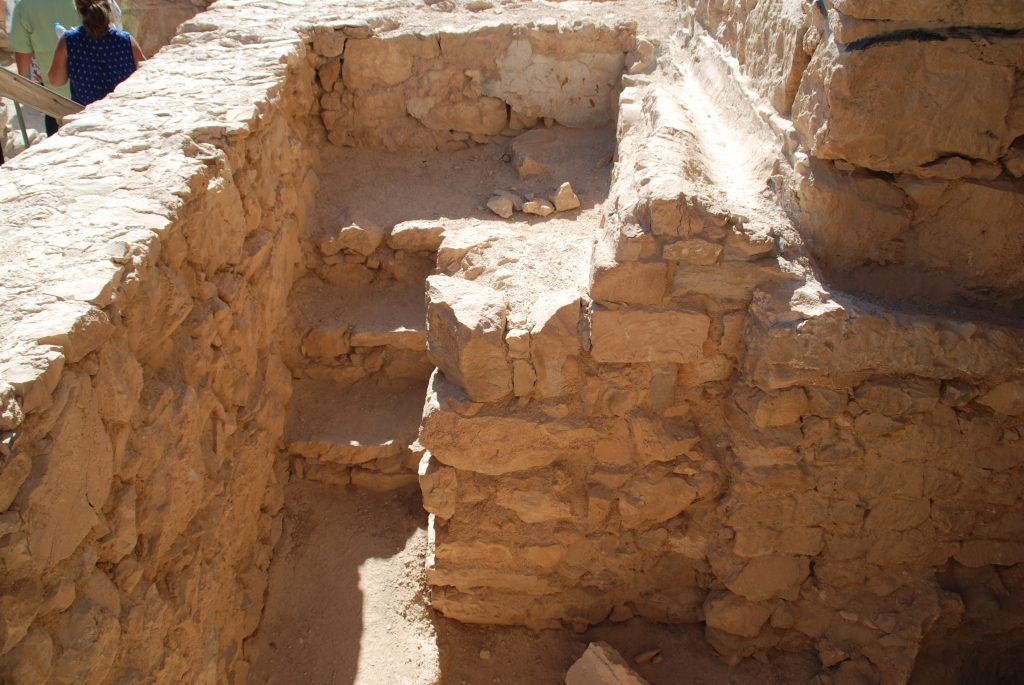
Mikvah at Masada
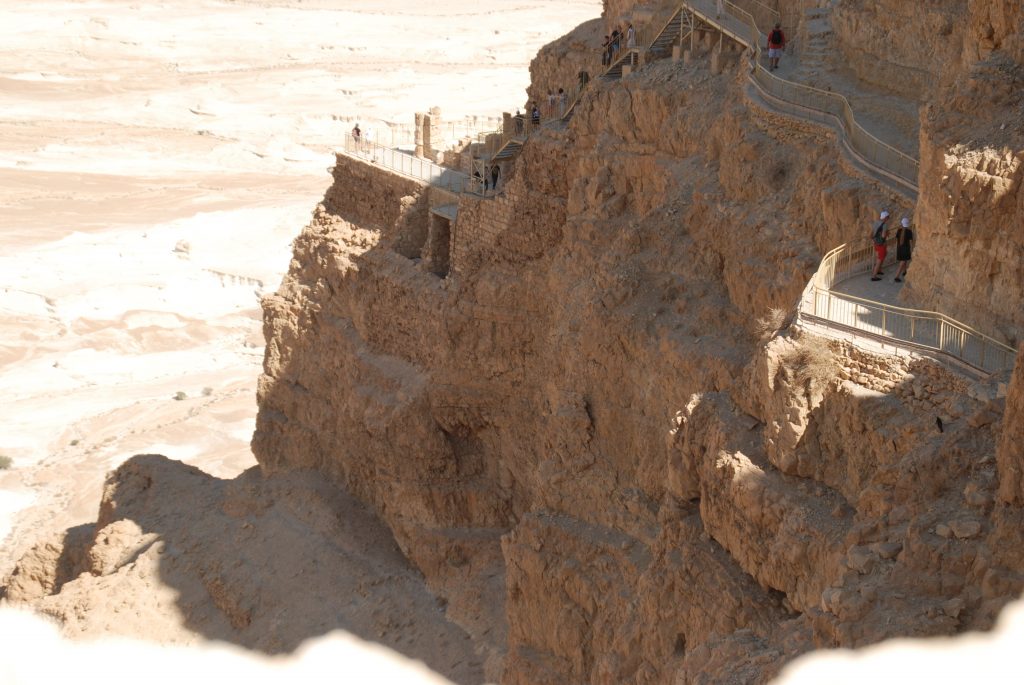
The Terraces of the Northern Palace, Masada
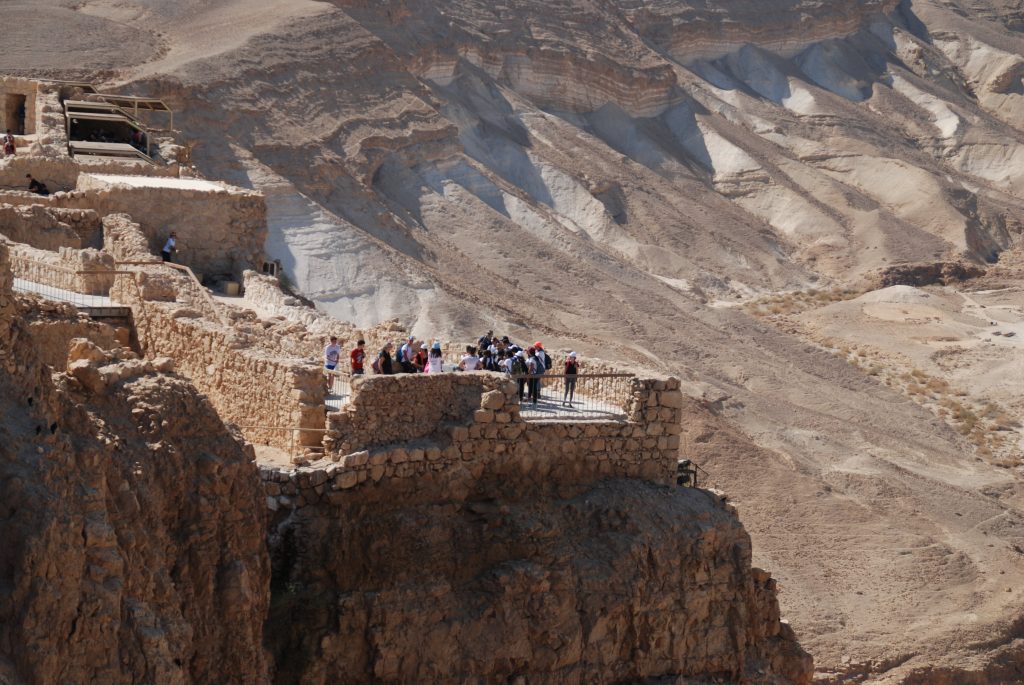
Beautiful View of Masada
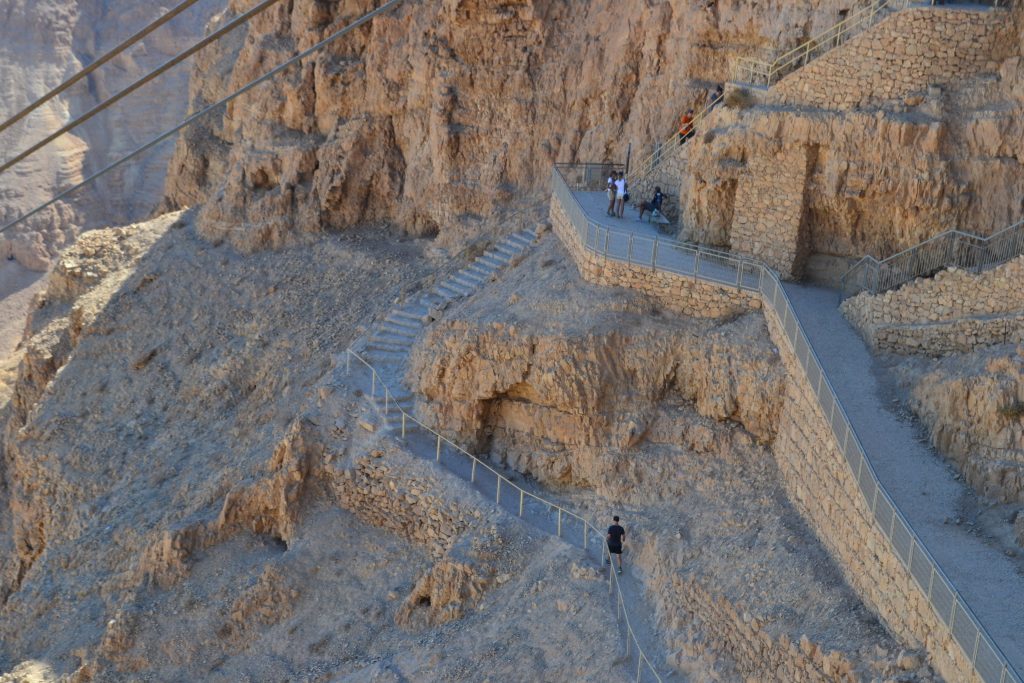
The Snake Path

Beautiful Palms